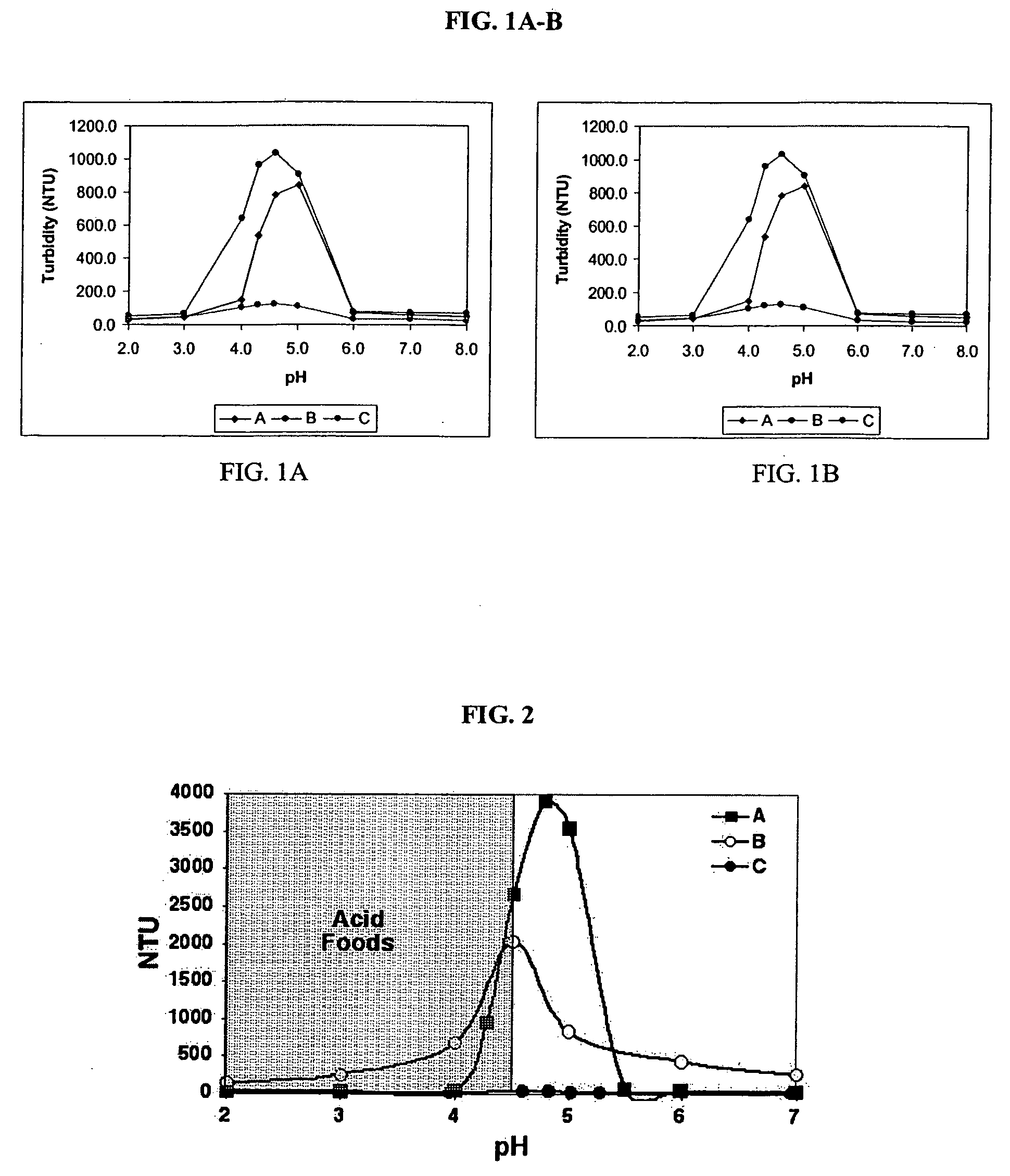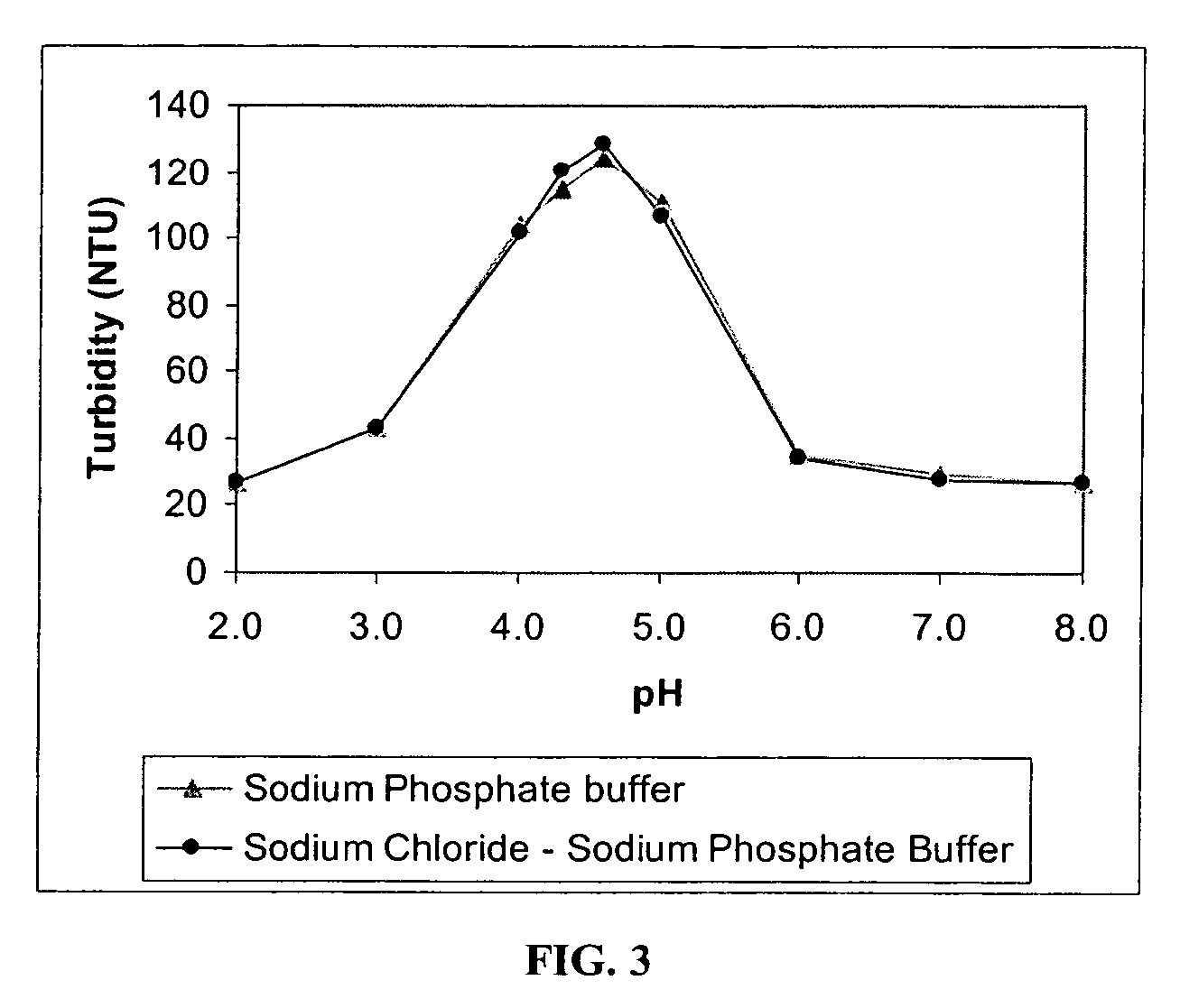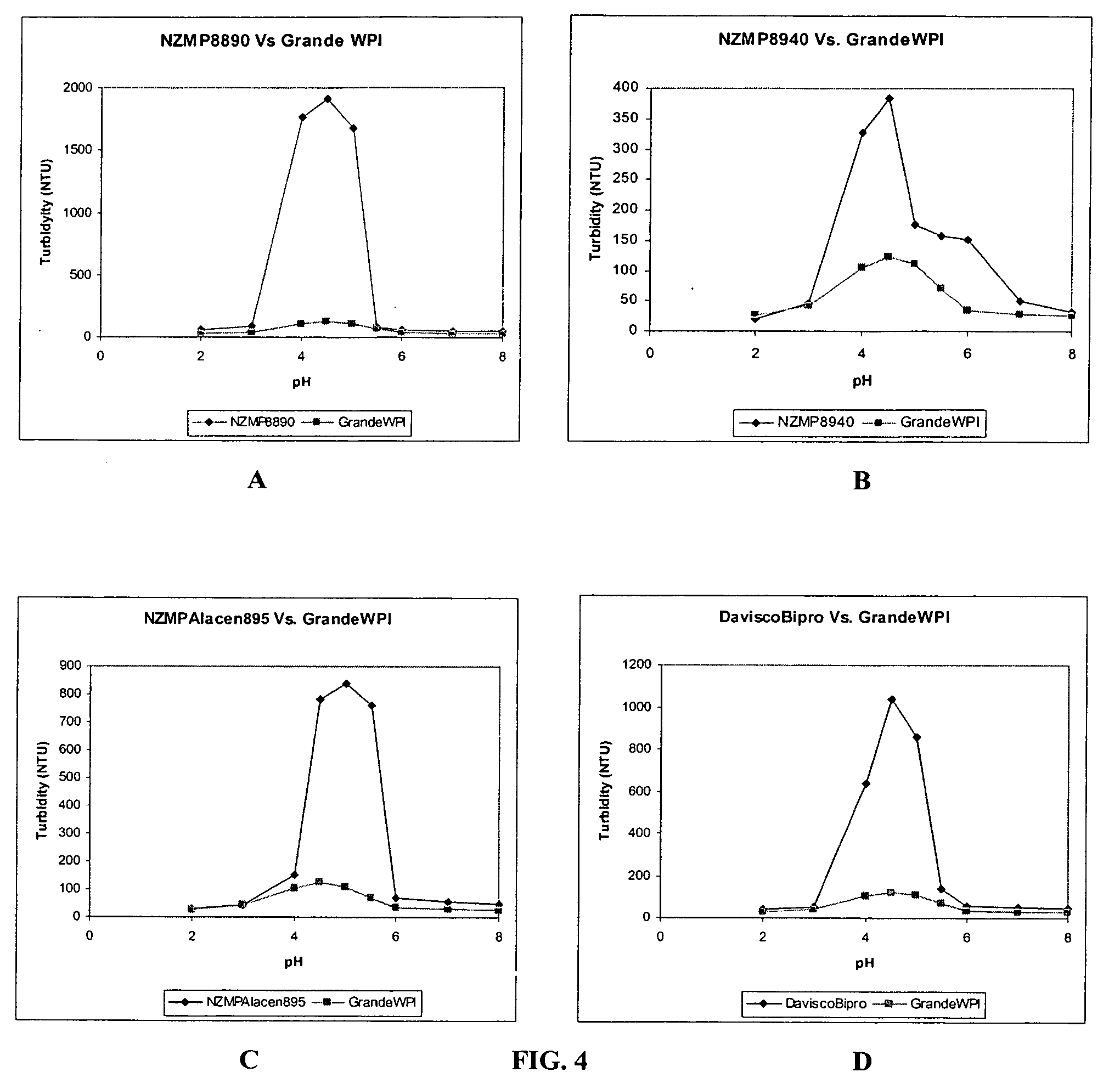Methods and compositions involving whey protein isolates
a technology of whey protein and composition, applied in the field of protein chemistry, can solve the problems of large volume, turbid solution, large volume of liquid whey processing, etc., and achieve the effect of preventing denaturation or preventing significant reduction or prevention of denaturation of whey proteins
- Summary
- Abstract
- Description
- Claims
- Application Information
AI Technical Summary
Benefits of technology
Problems solved by technology
Method used
Image
Examples
example 1
Materials and Methods
[0154] Mozzarella cheese whey (Grande Cheese Co., Brownsville, Wis.) was collected after the cream separator and filtered through a 3 μm pleated sheet cartridge filter. The whey was then adjusted to pH 4.0 using 20% H2SO4 solution.
[0155] An ion exchange column with 10 cm diameter (BPG 100, Amersham Pharmacia Biotech Inc., Piscataway, N.J., USA) packed with 2.38 Liters of 100 μm beaded polystyrene / divinyl benzene cation exchange resin substituted with methyl sulphonate (Mono-S, Amersham Pharmacia Biotech Inc., Piscataway, N.J., USA) connected to a programmable operating system (BioProcess Engineering system, Amersham Pharmacia Biotech Inc., Piscataway, N.J., USA) was used for conducting the ion-exchange part of the experiments. During this part, the clean ion-exchange column was first equilibrated using 0.01 M sodium lactate, pH 4.0. Then 6 column volumes (14.26 L) of the whey at pH 4.0 were passed through the column to facilitate the binding of proteins from ...
example 2
Materials and Methods
[0159] Mozzarella cheese whey (Grande Cheese Co., Brownsville, Wis.) was collected after the cream separator and filtered through a 3 μm pleated sheet cartridge filter. The whey was then adjusted to pH 4.0 using 20% H2SO4 solution and passed through a single S-type cation exchange column. Bound proteins were rinsed free of lactose and minerals using 0.01 M sodium lactate, pH 4.0, and desorbed using 0.01 M sodium phosphate, 0.15 M sodium chloride, pH 11.0 buffer until the effluent reached pH 9.0. This solution was concentrated by ultrafiltration at 20° C. Prototype clear beverage compositions were manufactured by adjusting the protein and sucrose concentration to 25 g and 100 g per Liter, respectively. For comparison beverages were also manufactured using protein isolate from two other commercial sources (BiPRO, Davisco Foods Intl., Eden Prairie, Minn., U.S.A. and B=PowerPro, Land O'Lakes Food Ingredients, Arden Hills, Minn., U.S.A.), as indicated. Turbidity of...
example 3
Materials and Methods
[0161] Mozzarella cheese whey (Grande Cheese Co., Brownsville, Wis.) was collected after the cream separator and filtered through a 3 μm pleated sheet cartridge filter. The whey was then adjusted to pH 4.0 using 20% H2SO4 solution.
[0162] An ion exchange column with 10 cm diameter (BPG 100, Amersham Pharmacia Biotech Inc., Piscataway, N.J., USA) packed with 2.38 Liters of 100 μm beaded polystyrene / divinyl benzene cation exchange resin substituted with methyl sulphonate (Mono-S, Amersham Pharmacia Biotech Inc., Piscataway, N.J., USA) connected to a programmable operating system (BioProcess Engineering system, Amersham Pharmacia Biotech Inc., Piscataway, N.J., USA) was used for conducting the ion-exchange part of the experiments. During this part, the clean ion-exchange column was first equilibrated using 0.01 M sodium lactate, pH 4.0. Then 6 column volumes (14.26 L) of the whey at pH 4.0 were passed through the column to facilitate the binding of proteins from ...
PUM
| Property | Measurement | Unit |
|---|---|---|
| Mass | aaaaa | aaaaa |
| Mass | aaaaa | aaaaa |
| Mass | aaaaa | aaaaa |
Abstract
Description
Claims
Application Information
 Login to View More
Login to View More - R&D
- Intellectual Property
- Life Sciences
- Materials
- Tech Scout
- Unparalleled Data Quality
- Higher Quality Content
- 60% Fewer Hallucinations
Browse by: Latest US Patents, China's latest patents, Technical Efficacy Thesaurus, Application Domain, Technology Topic, Popular Technical Reports.
© 2025 PatSnap. All rights reserved.Legal|Privacy policy|Modern Slavery Act Transparency Statement|Sitemap|About US| Contact US: help@patsnap.com



